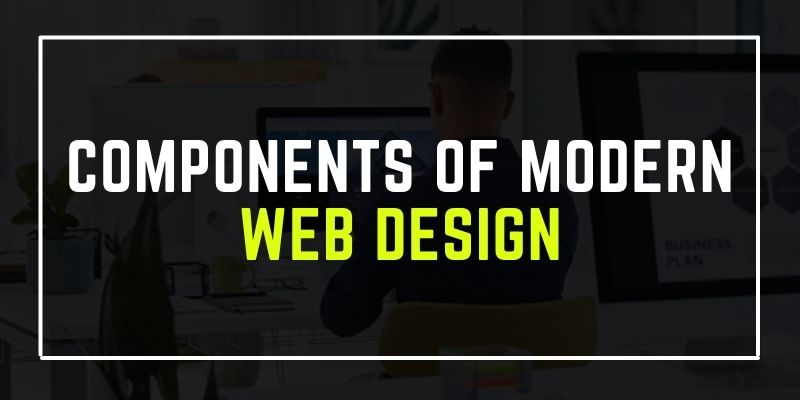
Modern website interfaces are what users want and need. The modern design shows you care about your website and how often you update it. As a website owner, a modern design will give you credibility and authority and you should know about the Components Of Modern Web Design.
How does modern website design look like? Most websites have a few common web design components. Let’s take a look at each.
Learn more about web design components through Web Designing Course in Chennai.
Large, readable typography
The size of typography has increased dramatically in the last few years thanks to the internet. This is partly due to responsive design, which ensures typefaces can be read across devices. It’s also partially due to a shift in how designers think about type.
Many of the typography rules that were used in early website design were adapted from print design. For body copy, the result was smaller text in serif typefaces. The size of subheads and headers was proportionally larger than today. Commonly, the body text is around 16px. This is an increase from 10px to 12.
Although there are more sans serifs used in body copy, the trend is less clear regarding serif versus non-serif. Designers are choosing typefaces that have a uniform stroke width, open bowls, a higher x-height, and a wider stroke width. These factors all contribute to readability. Users are more likely to scan the text and engage with it if it is easy to read.
Large, easily readable typography is not only for body copy.
The size of letters in headlines and subheads has increased across the board, as well as in headers for the hero and other heroes. It is not uncommon to see hero text within the 100px range. That’s a good thing. Users need to find a design element that is immediately recognizable to them, as there is so much information on the internet.
In demand content
A good website only depends on its content. Good content is the foundation for a modern website design.
- Useful, timely, and useful content that helps users solve problems.
- Each element should feel the same and direct the user to the same experience.
- Content should contain detailed information and be authoritative.
- Emotionally engaging content connects users with content.
- Search engine optimization is a must for all content so that users can find it.
Attention reader! If you want to acquire deep knowledge in components of a website, enroll Web Designing Course Online. They provide under the guidance of virtual trainers.
Responsive images
Large visual displays on your website are a big hit with users. This is why hero images, which are large, full-width photos that appear at the top of web pages, are so popular.
However, images must look great on smaller devices. Responsive images should be scaled to the device that is viewing the site. Responsive images adapt to the device and change their aspect ratio. This ensures that the image is sharp and clear and is sized appropriately regardless of where it is accessed.
Responsive Images create a visually rich experience that users can respond to.
Responsive images also do another thing. Responsive images ensure that all content, including any text overlays or call to action, is readable in all sizes. This content is more interesting and has a personal feel. It’s not the worst thing to visit a website from a mobile device. The top image retains the desktop shape but is too small at the top. )
This principle applies to all elements in a website header hero, including video. To speed up loading times, you might replace the hero video with a smaller image. To maintain consistency in user experience, use a photo that mirrors video imagery.
Conclusion:
Here, we discussed the components of a website. It will be useful for beginners. If you want to get in-depth knowledge of Webdesign, fetch with Web Designing Course in Coimbatore at FITA Academy for the best learning experience.
